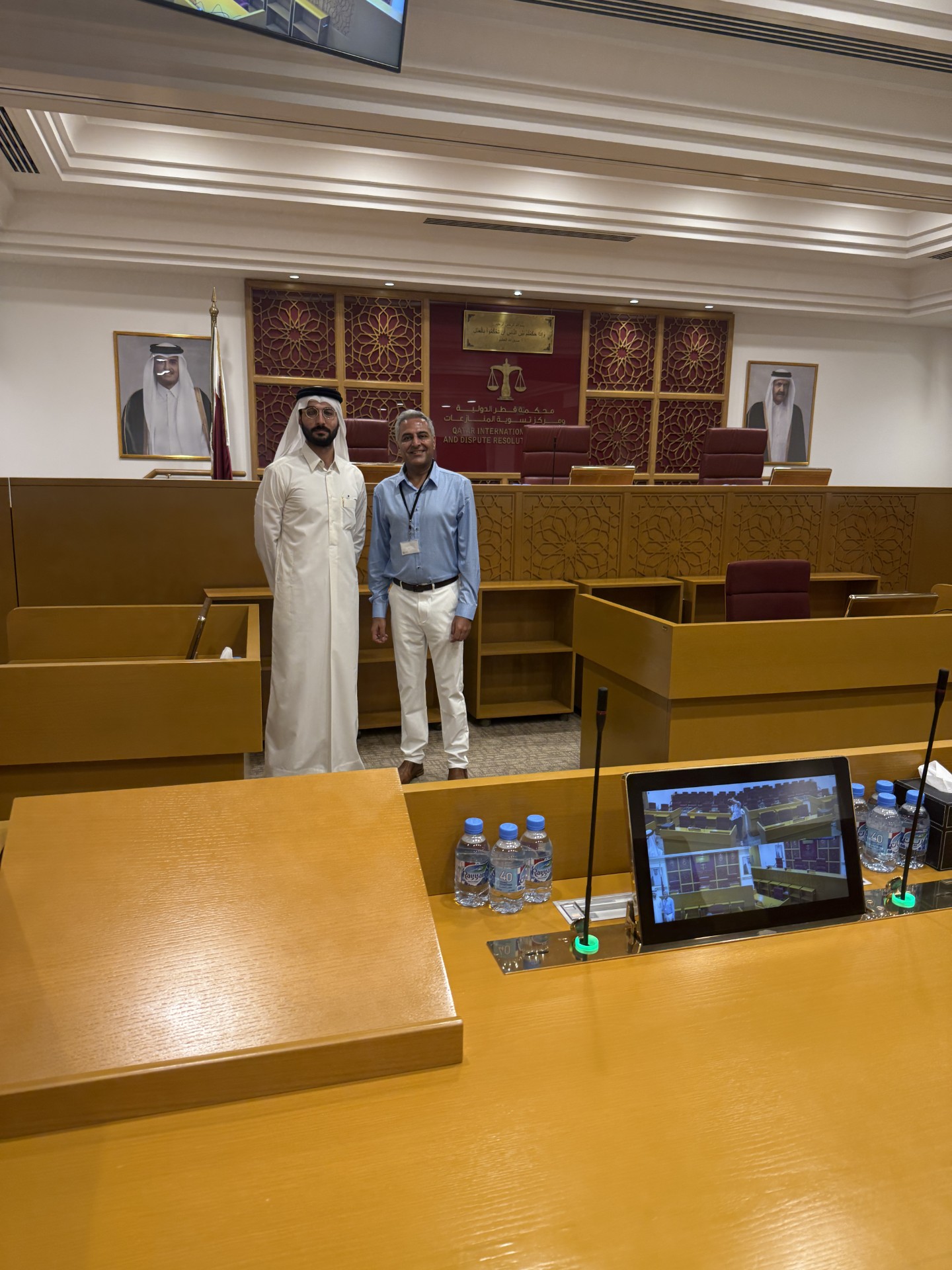Exploring Qatar’s Legal Landscape: Meeting Experts in the Middle East
During a recent professional visit to Qatar and Abu Dhabi, I had the privilege of touring the Qatar International Court and Dispute Resolution Centre (QICDRC), where I met with Mohammed Alansari, a senior figure instrumental in shaping the Court’s outreach and operations. The visit offered not only a behind-the-scenes look at the legal infrastructure in Doha but also sparked deeper reflection on the broader trend of emerging “internationalised” legal systems in jurisdictions like Dubai, Singapore, and Kazakhstan.
The Qatar International Court: A Global Model in a Regional Context
The QICDRC, headquartered within the Qatar Financial Centre (QFC), is a unique legal body that sits adjacent to, but functionally independent of, the Qatari national judicial system. Designed to handle civil and commercial disputes, its jurisdiction applies to entities within the QFC, disputes that opt-in via contract, and matters governed by arbitration where the court is named as the competent authority.
I was given a personal tour of the court’s premises and was introduced to the eCourt system, which streamlines case filing, document submission, and remote hearings. The architecture itself reflects transparency and accessibility, while the use of international judges and legal professionals — many from common law backgrounds — ensures neutrality, procedural integrity, and a level of confidence that appeals to foreign investors and expatriates alike.
Meeting a Dubai-Based Non-Domiciled Resident
While in Doha, I also had the opportunity to speak with a Dubai-based businessperson, a non-domiciled resident with ongoing commercial interests in the UAE. Our discussion highlighted how these modern courts — in Dubai, Qatar, and increasingly Singapore and Kazakhstan — serve a critical role for foreign nationals and international businesses.
Their value lies not only in adjudication but in offering a legal “safe zone” where foreign investors do not have to navigate unfamiliar local laws or face perceived bias. Instead, they are protected by internationally recognised rules of procedure, adjudicated by world-class jurists. The QICDRC, DIFC Courts (Dubai), SICC (Singapore), and AIFC Court (Kazakhstan) are all examples of this evolving model — internationalised courts operating under domestic umbrellas.
Bridging Civilisations: A Hybrid Legal Future
What struck me most is how these institutions offer an elegant solution to a common dilemma: how can a nation maintain its legal sovereignty while still fostering an environment that is trusted by international stakeholders? The answer appears to lie in creating legal structures that, while embedded locally, operate globally.
In all these centres, including Qatar, the courts adopt English common law principles, court rules are published in English, and parties are allowed to appoint counsel of their choice, often from international firms. I was impressed by how the QICDRC has positioned itself as not merely a dispute resolution forum, but a platform of legal education, reform, and investor confidence.
Conclusion
This visit affirmed that Qatar is not only investing in infrastructure and finance — it is also laying the groundwork for sophisticated legal systems that match international expectations. These systems protect foreign direct investment, promote transparency, and crucially, create a buffer between foreign investors and potentially opaque native judicial frameworks.
As global commerce becomes ever more interconnected, these hybrid legal zones may well become the preferred route for dispute resolution, investment security, and legal innovation.
Our services
We are now developing cross-border connections to various lawyers and professionals in the event of death either abroad or in this country where you have assets in other countries. Please contact Vinay Tanna if you have any questions.




